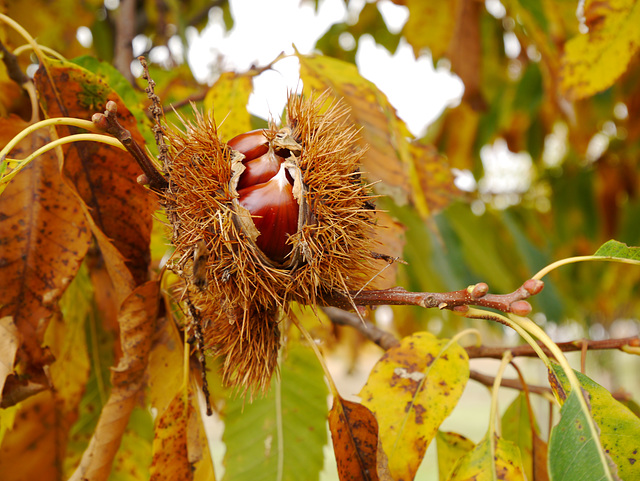Moisés
HFF
Peace
Hazelnut autumn trees
This bridge was constructed at the end of the 1 st…
See you next autumn or see my begigining if you pl…
Autumn Sky
Fall 2018, more than 1000 years later ...
HFF
Northern Autumn
Flying
Mirror
Inner Light
A escadaria
HFF
Passagem
Cargaleiro IV
Nossa Senhora dos Remédios
Nossa Senhora dos Remédios
Misericordia de Mourão -…
HFF
Linge - panni stesi
Goodbye Chaves
Outono II
I have been invited !
Vila Viçosa - Palace grounds
The grey church
Cargaleiro - My neighbour's door
HFF
Penamacor - The bell
Ficus elastica
Roman via
Penamacor - VIII
Poppies to this Day
Manuel Cargaleiro
HFF
To a friend - Ceramicas
Castelo Branco
Pôr do sol, Guincho.
Serra da Estrela - XII
Belmonte - III
Praia do Cabo Espichel : 38,4144 N -9,2228 W
HFF
Guarda - XI
Guarda - III
See also...
See more...Keywords
Authorizations, license
-
Visible by: Everyone -
All rights reserved
- Photo replaced on 21 Nov 2018
-
374 visits
Castanhas - Triplets !


The sweet chestnut was introduced into Europe from Sardis, in Asia Minor; the fruit was then called the Sardian nut. It has been a staple food in southern Europe, Turkey, and southwestern and eastern Asia for millennia, largely replacing cereals where these would not grow well, if at all, in mountainous Mediterranean areas. Evidence of its cultivation by man is found since around 2000 BC. Alexander the Great and the Romans planted chestnut trees across Europe while on their various campaigns. A Greek army is said to have survived their retreat from Asia Minor in 401–399 BC thanks to their stores of chestnuts. Ancient Greeks, such as Dioscorides and Galen, wrote of chestnuts to comment on their medicinal properties—and of the flatulence induced by eating too much of it. To the early Christians, chestnuts symbolized chastity. Until the introduction of the potato, whole forest-dwelling communities which had scarce access to wheat flour relied on chestnuts as their main source of carbohydrates. In some parts of Italy, a cake made of chestnuts is used as a substitute for potatoes. In 1583, Charles Estienne and Jean Liébault wrote, "an infinity of people live on nothing else but (the chestnut)". In 1802, an Italian agronomist said of Tuscany that "the fruit of the chestnut tree is practically the sole subsistence of our highlanders", while in 1879 it was said that it almost exclusively fed whole populations for half the year, as "a temporary but complete substitution for cereals".
Trudy Tuinstra, RHH, Frans Schols, and 22 other people have particularly liked this photo
- Keyboard shortcuts:
Jump to top
RSS feed- Latest comments - Subscribe to the comment feeds of this photo
- ipernity © 2007-2025
- Help & Contact
|
Club news
|
About ipernity
|
History |
ipernity Club & Prices |
Guide of good conduct
Donate | Group guidelines | Privacy policy | Terms of use | Statutes | In memoria -
Facebook
Twitter

www.ipernity.com/group/tolerance
Sign-in to write a comment.